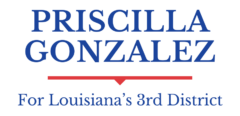Despite major efforts to alleviate the effects of flooding and erosion in St. Martin Parish, an estimated 10,000 to 15,000 households continue to be impacted by these challenges, with an additional 20,000 to 30,000 residents feeling the larger impact. Continued investment in infrastructure upgrades, community resilience, and economic diversification is critical for mitigating the parish’s long-term demographic implications.
St. Martin Parish, located in southern Louisiana, has experienced significant challenges with flooding and erosion over the past three decades, impacting a substantial portion of its residents. This area is particularly vulnerable due to its proximity to major waterways like the Atchafalaya Basin and the Bayou Teche, which are prone to overflowing during heavy rainfall and storm events.
Flooding Impact
- Major Flood Events:
- 1993 Floods: Caused by heavy rainfall and the overflow of the Atchafalaya River, affecting thousands of residents, particularly in lower-lying areas.
- 2005 Hurricane Katrina: Although the primary impact was on New Orleans, the storm surge and heavy rains affected St. Martin Parish, causing widespread flooding.
- 2016 Floods: Considered one of the worst flooding events in Louisiana’s history, it affected approximately 50,000 homes statewide, with a significant number in St. Martin Parish.
Erosion Impact
- Wetland Loss: The erosion of coastal and inland wetlands has been a persistent issue, leading to the loss of natural barriers that protect against storm surges and flooding. This has accelerated land loss in the parish, making communities more vulnerable.
- Impact on Agriculture: Erosion has also affected agricultural lands, a crucial part of the local economy, leading to loss of soil fertility and increased difficulty in farming activities.
St. Martin Parish has received significant funding over the past three decades to address the impacts of flooding and erosion. This funding has come from various sources, including federal, state, and local government programs, as well as private and non-profit organizations. The allocation of these funds has been crucial in mitigating the effects of these natural disasters and improving the resilience of the parish.
Major Funding Sources and Allocations
- Federal Emergency Management Agency (FEMA):
- Post-Disaster Assistance: After major flooding events like the 1993 floods, Hurricane Katrina in 2005, and the 2016 floods, FEMA has provided substantial disaster relief funds. For example, after the 2016 floods, FEMA allocated over $1 billion to Louisiana, with a significant portion directed to affected parishes including St. Martin.
- Hazard Mitigation Grant Program (HMGP): This program has provided millions of dollars for projects aimed at reducing future flood risks, including home elevations, property buyouts, and infrastructure improvements.
- Community Development Block Grant (CDBG) Program:
- Disaster Recovery: Administered by the U.S. Department of Housing and Urban Development (HUD), the CDBG program has allocated funds for long-term disaster recovery efforts. For instance, after the 2016 floods, Louisiana received over $1.7 billion in CDBG-DR funds, with portions allocated to St. Martin Parish for housing rehabilitation, infrastructure repair, and economic revitalization.
- Louisiana State Programs:
- Louisiana Watershed Initiative: Launched in response to the 2016 floods, this initiative aims to improve flood risk management across the state. St. Martin Parish has benefited from this program through various projects focusing on watershed management and flood mitigation.
- Coastal Protection and Restoration Authority (CPRA): The CPRA has allocated funds for coastal restoration projects to combat erosion and preserve wetlands in St. Martin Parish. These efforts include marsh creation, shoreline protection, and sediment diversion projects.
- Army Corps of Engineers:
- Flood Control Projects: The U.S. Army Corps of Engineers has undertaken several flood control projects in St. Martin Parish, including levee construction and maintenance, which have received substantial federal funding.
Estimated Total Funding
- While specific estimates for St. Martin Parish alone are difficult to determine due to the integration of monies across numerous projects and locations, the parish is estimated to have received hundreds of millions of dollars in combined federal, state, and local financing over the last three decades. Key allocations include:
Post-2016 Flooding: Over $100 million from FEMA and CDBG-DR programs specifically for recovery and mitigation in St. Martin Parish.
- Louisiana Watershed Initiative: Significant portions of the $1.2 billion allocated statewide have been directed to projects impacting St. Martin Parish.
- CPRA and Army Corps of Engineers Projects: Tens of millions in funding for coastal restoration and flood control efforts in the parish.
The large financing provided to St. Martin Parish to manage flooding and erosion has been critical in assisting recovery efforts, improving infrastructure, and implementing long-term mitigation methods. These initiatives are intended to safeguard citizens, conserve natural landscapes, and strengthen the parish’s resilience to future environmental issues.
A thorough and robust approach is required to properly serve St. Martin Parish citizens who have been directly impacted by flooding and erosion. This strategy should include increasing and expediting home elevation and buyout programs to relocate families from the most vulnerable areas, as well as significant investments in advanced flood defense infrastructure such as improved levee systems, upgraded drainage networks, and flood barriers. Furthermore, large-scale wetland restoration efforts will help to reestablish natural flood buffers. Establishing community resilience centers can provide resources and support during and after flood occurrences, while strong economic diversification projects can provide alternative livelihoods that are less reliant on flood-prone industries. Enhanced emergency preparedness and response strategies, as well as ongoing education and awareness initiatives, will ensure that citizens are well-prepared for future flood catastrophes. These initiatives, taken together, will make St. Martin Parish safer and more resilient.
